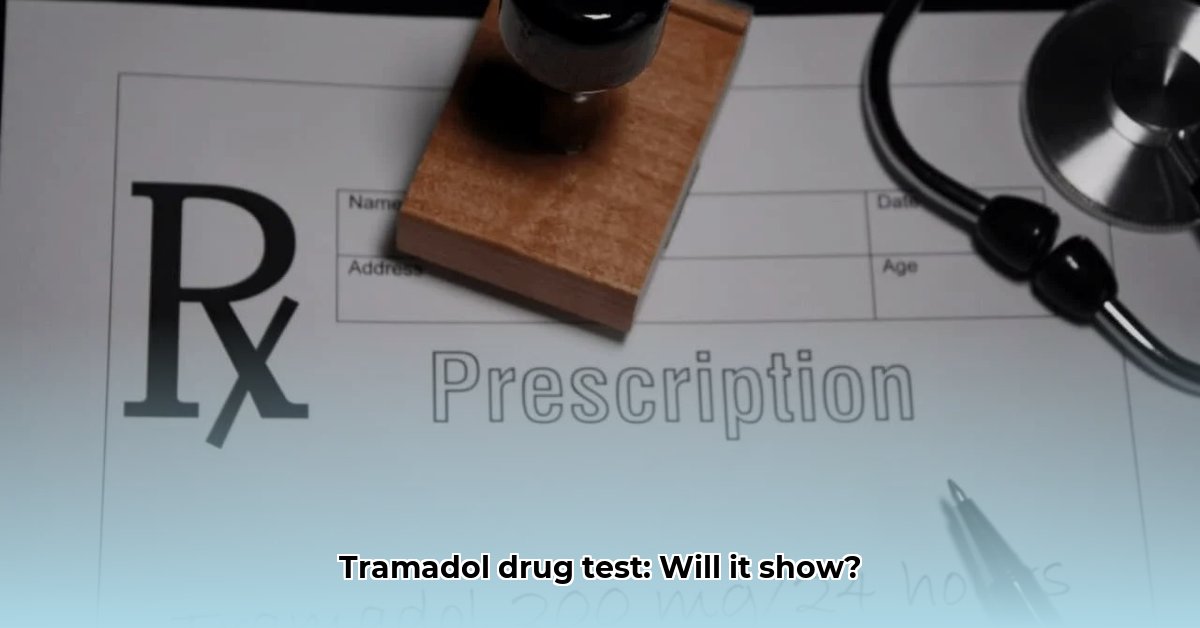Understanding Tramadol Drug Testing
Tramadol, a synthetic opioid pain reliever, presents a unique challenge in drug testing. While not typically screened for in standard 5-panel tests often used for pre-employment screenings, it can be detected by other tests, creating uncertainty for those with legitimate prescriptions. This article clarifies how tramadol interacts with various drug tests, explains potential legal implications, and offers practical advice for navigating this complex issue.
Decoding Drug Test Panels
Drug tests analyze for specific substances, grouped into “panels.” Understanding these panels is crucial for anticipating test results.
5-Panel Tests
These tests are the most common, screening for five frequently misused drugs: marijuana, cocaine, PCP, amphetamines, and opiates (like heroin and codeine). Tramadol is unlikely to be detected by a standard 5-panel test.
10-Panel and Expanded Tests
These broader tests encompass the 5-panel substances and additional ones, including some prescription medications. Tramadol is more likely to be detected by these tests, although not always guaranteed. 12-panel tests expand the scope even further.
Specialized Opioid Panels
These tests are specifically designed to detect opioids, including tramadol. If opioid use is a concern, this type of test will likely be used and will detect tramadol.
Tramadol Detection Times: How Long Does It Stay in Your System?
Tramadol’s detection window varies based on several factors, including individual metabolism, dosage, frequency of use, and the type of test. The following table provides estimated detection times:
| Sample Type | Detection Window (Approximate) |
|---|---|
| Urine | 1-3 days |
| Blood | 12-24 hours |
| Saliva | Up to 2 days |
| Hair | Up to 90 days (though less reliable for recent use) |
These are estimates, and actual detection times can vary. Factors like hydration and overall health may also play a role, though their impact is generally less significant than metabolism and dosage.
Legal Implications: Prescription vs. Non-Prescription Use
Having a valid tramadol prescription offers legal protection, but it’s crucial to inform the testing facility beforehand. This proactive disclosure prevents misinterpretation of a positive result. Failing to disclose a prescription might raise suspicion, even if the use is legitimate.
Testing positive for tramadol without a prescription can have serious legal consequences, varying by state and the context of the test. Penalties can include legal charges, especially in cases involving driving under the influence, and potential job loss.
State laws regarding tramadol vary. Some states classify it as a controlled substance, increasing the severity of penalties for non-prescribed use. Researching your state’s specific laws is recommended.
What to Do If You Have a Prescription
- Inform the Testing Facility: Before the test, clearly communicate your tramadol prescription to the testing facility and provide documentation.
- Employer Disclosure (Recommended): While not always legally required, disclosing tramadol use to your employer before a pre-employment or workplace drug test is generally advisable, particularly in safety-sensitive positions. This open communication can prevent misunderstandings and demonstrate responsible medication use.
False Positives: What to Do
While uncommon, false positives for tramadol can occur. Certain medications might trigger a false positive. If you suspect a false positive:
- Contact the Testing Facility: Immediately inform the testing facility and request a confirmatory test, such as gas chromatography/mass spectrometry (GC/MS), which is more specific and accurate.
- Consult with Your Doctor: Discuss the possibility of a false positive with your doctor, providing a list of all medications you are taking.
Talking to Your Employer
Discussing tramadol use with an employer can be sensitive, but open communication is key, especially in pre-employment screenings. Be prepared to provide prescription documentation and explain your situation clearly and professionally.
Alternatives to Tramadol for Pain Management
Tramadol isn’t the only pain relief option. Alternatives include other medications (NSAIDs like ibuprofen), physical therapy, and alternative therapies like acupuncture. Consult with a healthcare professional for personalized advice. Choosing the right pain management strategy depends on individual needs and circumstances.
Disclaimer
This information is for educational purposes only and does not constitute medical or legal advice. Consult with qualified professionals for personalized guidance. Medical and scientific understanding of pain management and drug testing is constantly evolving, so staying informed about the latest research is important.
- Doctor Work Life Balance: Proven Strategies for Physician Well-being - November 20, 2025
- Find Your Work-Life Harmony: Quotes for a Fulfilling Life - November 18, 2025
- CRNA Work-Life Balance: Strategies for a Healthier Lifestyle - November 16, 2025
















